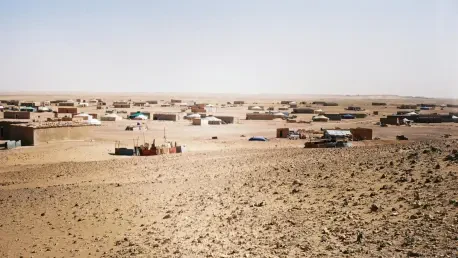In a region where climate change is accelerating at a pace that outstrips global averages, Southern Africa faces an urgent need for innovative tools to manage the escalating risks of extreme weather events. The South African Climate Index, a groundbreaking collaboration between Old Mutual Insure and the Actuarial Society of South Africa (ASSA), emerges as a vital solution to this pressing challenge. Unlike traditional global climate models that often paint broad strokes of temperature rises, this index drills down into localized data, offering precise insights into how specific areas are impacted by environmental shifts. With warming trends intensifying and weather patterns becoming increasingly unpredictable, the demand for such a targeted approach has never been more critical. This tool not only promises to reshape the insurance industry by refining risk assessment but also holds potential for broader societal benefits, paving the way for smarter responses to climate threats across multiple sectors.
Unpacking a Localized Climate Solution
The South African Climate Index sets itself apart by focusing on detailed, localized climate patterns rather than relying on generalized global projections. Experts behind its development, including Caesar Balona, have harnessed data from advanced sources like the European Space Agency, adapting it to reflect South Africa’s diverse geography. This approach allows the index to map risks at sub-regional and even city levels, pinpointing vulnerabilities to events like flooding or drought that vary widely across locales. Such granularity provides a clearer understanding of how climate change manifests differently in specific areas, moving beyond vague global warming estimates. For stakeholders, this means access to actionable information that directly correlates with real-world impacts, particularly in terms of losses tied to extreme weather. The index’s ability to zoom in on these nuances marks a significant leap forward in tailoring climate risk strategies to the unique needs of Southern Africa’s varied landscapes.
This localized focus addresses a critical gap in traditional climate modeling, which often overlooks the specific challenges faced by smaller regions within a larger country. By integrating high-resolution data, the index reveals patterns of extreme weather that are often masked in broader analyses, such as sudden hailstorms or prolonged dry spells in particular districts. This precision is invaluable for industries that depend on accurate risk forecasting to make informed decisions. Insurers, for instance, can now better grasp the likelihood of claims arising from localized disasters, while other sectors gain insights into protecting assets in high-risk zones. The emphasis on sub-regional detail also ensures that mitigation efforts are not wasted on generic solutions but are instead directed where they are most needed. As a result, the South African Climate Index stands as a pioneering framework that redefines how climate data can be applied practically to safeguard both economic and community interests.
Redefining Risk Strategies for Insurers
For insurance providers like Old Mutual, the South African Climate Index is proving to be a transformative asset in navigating the complex landscape of climate-related risks. By concentrating on extreme weather events rather than routine patterns, the tool enables the creation of more accurate underwriting models that reflect true exposure levels in specific areas. This shift allows insurers to fine-tune pricing strategies, ensuring premiums align with the actual likelihood of claims stemming from natural disasters. Additionally, the index supports smarter capital allocation, helping companies set aside adequate reserves to cover potential losses from severe weather incidents. In a region where sudden floods or droughts can devastate communities and economies alike, such precision in financial planning is essential for maintaining stability and trust within the insurance sector.
Beyond pricing and reserves, the index empowers insurers to proactively mitigate risks by identifying high-vulnerability zones before disasters strike. This forward-looking capability means companies can adjust coverage offerings or partner with local entities to reduce exposure in at-risk areas, rather than merely reacting to claims after the fact. The detailed insights also foster better communication with policyholders, as insurers can provide data-backed warnings or advice tailored to specific regional threats. This not only enhances customer confidence but also reduces the overall burden of unexpected losses. As climate impacts grow more severe in Southern Africa, the ability to anticipate and prepare for outlier events becomes a cornerstone of sustainable business practices. The South African Climate Index, with its focus on actionable data, thus equips the insurance industry to adapt dynamically to an increasingly volatile environmental landscape.
Extending Benefits Beyond Insurance
The value of the South African Climate Index stretches far beyond the boundaries of the insurance sector, offering significant advantages to government bodies and infrastructure planners. By overlaying climate risk maps with demographic data on vulnerable populations, the tool helps identify priority areas for disaster preparedness and resource allocation. This targeted approach ensures that limited funds are directed toward building resilient infrastructure in regions most susceptible to extreme weather, such as flood-prone coastal towns or drought-stricken inland areas. Policymakers can use these insights to design initiatives that protect communities at greatest risk, reducing the human and economic toll of environmental hazards. The index thus serves as a bridge between scientific data and practical governance, fostering a more coordinated response to climate challenges.
Moreover, the index’s detailed risk assessments support long-term planning for sustainable urban and rural development. Planners can leverage the data to avoid constructing critical facilities in high-risk zones or to reinforce existing structures against predicted weather threats. This proactive stance minimizes potential disruptions and costly repairs, preserving public safety and economic continuity. The integration of climate insights with social and economic considerations also highlights disparities in vulnerability, prompting targeted interventions for marginalized groups who often bear the brunt of disasters. By informing policies that address both immediate needs and future risks, the index contributes to a broader framework of community resilience. Its role in shaping strategic decisions underscores how localized climate tools can drive systemic change across diverse sectors in Southern Africa.
Fostering a Collaborative Approach to Resilience
A standout feature of the South African Climate Index initiative is its emphasis on collaboration over competition, reflecting a deep commitment to shared progress. Old Mutual’s choice to make the index accessible to a wide range of stakeholders, rather than limiting it to internal use, signals a recognition that climate risks are a collective challenge requiring unified action. This spirit of openness aligns with other regional efforts, such as the Quick Reaction Force for wildfires in the Western Cape, which similarly prioritizes cooperative response mechanisms. By fostering an environment where data and strategies are shared, the index encourages insurers, government agencies, and other entities to work together in building resilience against environmental threats, amplifying the impact of individual efforts.
This collaborative ethos also sets a precedent for how industries can tackle large-scale issues that transcend single organizations. The index’s availability allows smaller insurers or under-resourced municipalities to access cutting-edge climate data, leveling the playing field and ensuring broader adoption of best practices in risk management. Such inclusivity is particularly crucial in a region where economic disparities can hinder access to advanced tools, leaving some communities more exposed to climate impacts. By promoting a culture of mutual support, the initiative helps cultivate trust and coordination among diverse stakeholders. The South African Climate Index thus not only provides technical solutions but also champions a model of partnership that could inspire similar efforts in other climate-vulnerable regions around the globe.
Charting the Path Forward with Innovation
Looking to the horizon, the South African Climate Index is positioned for growth, with plans to expand its scope by incorporating additional weather perils like hail, wind, and lightning. This evolution ensures the tool remains relevant as climate patterns shift and new challenges emerge, providing a comprehensive framework for risk assessment. Upcoming enhancements, including programmatic data access, will further streamline how stakeholders integrate these insights into their operations, making the index even more user-friendly and impactful. With strong early feedback from industry players, the initiative is already gaining traction as a benchmark for innovative climate resilience strategies in Southern Africa, setting the stage for widespread adoption.
The focus on continuous improvement reflects a proactive mindset that prioritizes adaptability in an era of environmental uncertainty. Expanding the range of tracked perils means the index can address a fuller spectrum of risks, from sudden storms to creeping droughts, offering a more holistic view of potential threats. This forward-thinking approach is critical for maintaining relevance in a rapidly changing climate landscape, where yesterday’s solutions may not suffice for tomorrow’s problems. As the index evolves, it also opens doors for cross-sector innovation, encouraging the development of complementary tools and policies. The commitment to ongoing refinement and expansion positions this initiative as a cornerstone for future efforts to safeguard Southern Africa against the mounting pressures of climate change.









